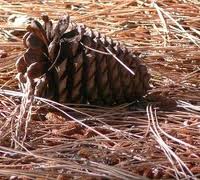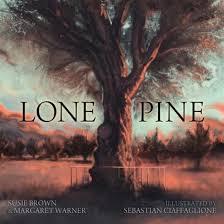Before Reading

On the evening of the 6th of August, 1915, was the Battle of Lone Pone in Gallipoli. The attack, launched by Sir William Birdwood's 1st Australian Division of 4,600 men (from 1st, 2nd and 3rd Brigades), was chiefly intended to draw attention away from the key diversionary attack at Sari Bair. It was directed against the so-called 'Lone Pine' position in Turkish hands some 100 metres above Anzac Cove - thus a key target on 6 August 1915 given the planned mass landings intended for Anzac Cove the same day. There were 9000 fatalities from both sides from that one battle that lasted 5 days. This battle remains notorious to this day.
View the following short movie to get a feel for the area of Lone Pine and to hear a little about what happened there.
View the following short movie to get a feel for the area of Lone Pine and to hear a little about what happened there.
Read the text

Read the story.
Take note of the language used by the authors and the illustrations by Sebastian Ciaffaglione.
The choice of words and the colours and style of the illustration work to evoke certain moods and feelings in us, the readers.
Take note of the language used by the authors and the illustrations by Sebastian Ciaffaglione.
The choice of words and the colours and style of the illustration work to evoke certain moods and feelings in us, the readers.
Questions for discussion
• Why do you think the authors have included the dates at the beginning of some of the pages? What does this tell you about the story?
• How is colour used on each of the pages?
• What moods do the colours of the illustrations evoke as you read the book?
• Does this influence how you feel as you read the book?
• What words on the first page stand out because of the illustrations? Why do you think this?
• Who are the characters mentioned in the book? How are they all connected to this particular story? Can you connect them all to a particular person or object?
• How does the image of the lone tree and the pine cone reappear throughout the story? List all the places that you see the tree or the pine cone in the book (as well as the places that it is mentioned.
• What does this image mean to each of the characters?
• Some of the characters are never actually pictured in the book. Why is this? How are they described instead? Do we know what has happened to them?
• How are the three saplings like the three brothers?
• How do you feel when you discover that the story is real? Does it make you think differently about the book that you have just read?
• How is colour used on each of the pages?
• What moods do the colours of the illustrations evoke as you read the book?
• Does this influence how you feel as you read the book?
• What words on the first page stand out because of the illustrations? Why do you think this?
• Who are the characters mentioned in the book? How are they all connected to this particular story? Can you connect them all to a particular person or object?
• How does the image of the lone tree and the pine cone reappear throughout the story? List all the places that you see the tree or the pine cone in the book (as well as the places that it is mentioned.
• What does this image mean to each of the characters?
• Some of the characters are never actually pictured in the book. Why is this? How are they described instead? Do we know what has happened to them?
• How are the three saplings like the three brothers?
• How do you feel when you discover that the story is real? Does it make you think differently about the book that you have just read?
Click the following button to the real story of the Lone Pine that is planted at the Australian War Memorial in Canberra. Maybe you will get to see it when you visit!
More teaching notes for teachers
Click the link below to access further teacher ideas and activities to go with this story from Hardie Grant.
| lone_pine_teachers_notes.pdf | |
| File Size: | 0 kb |
| File Type: | |